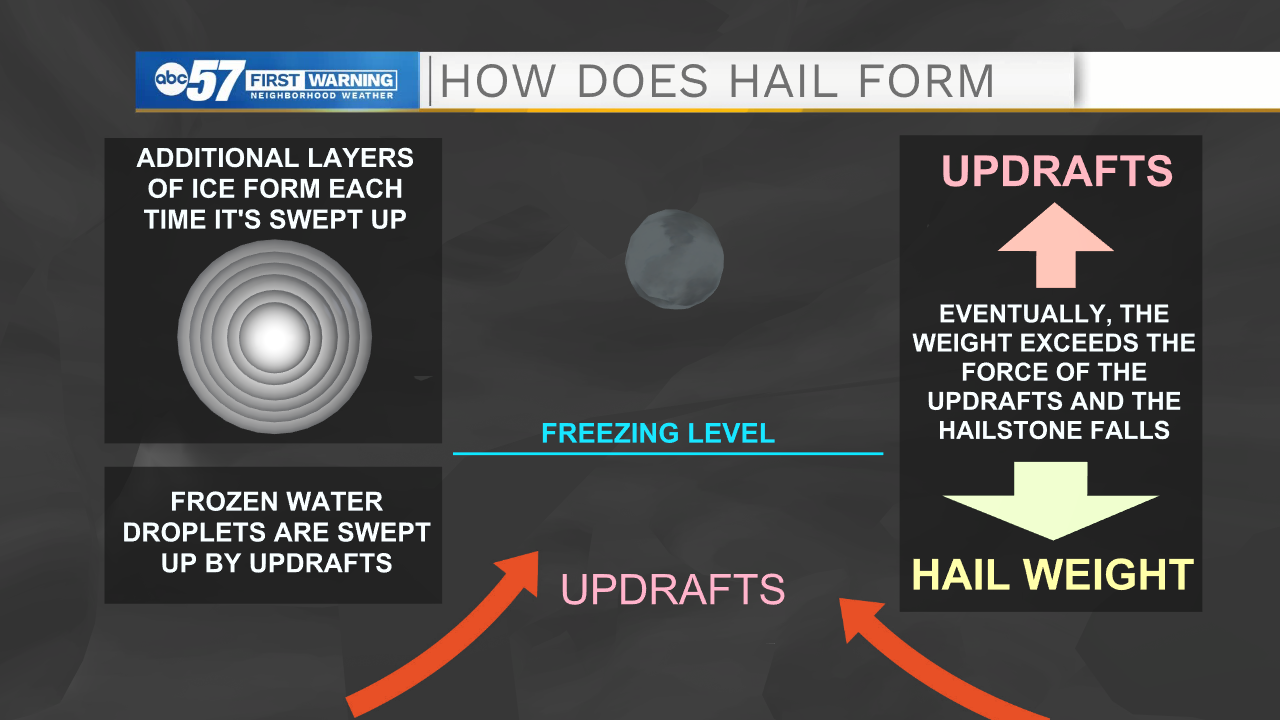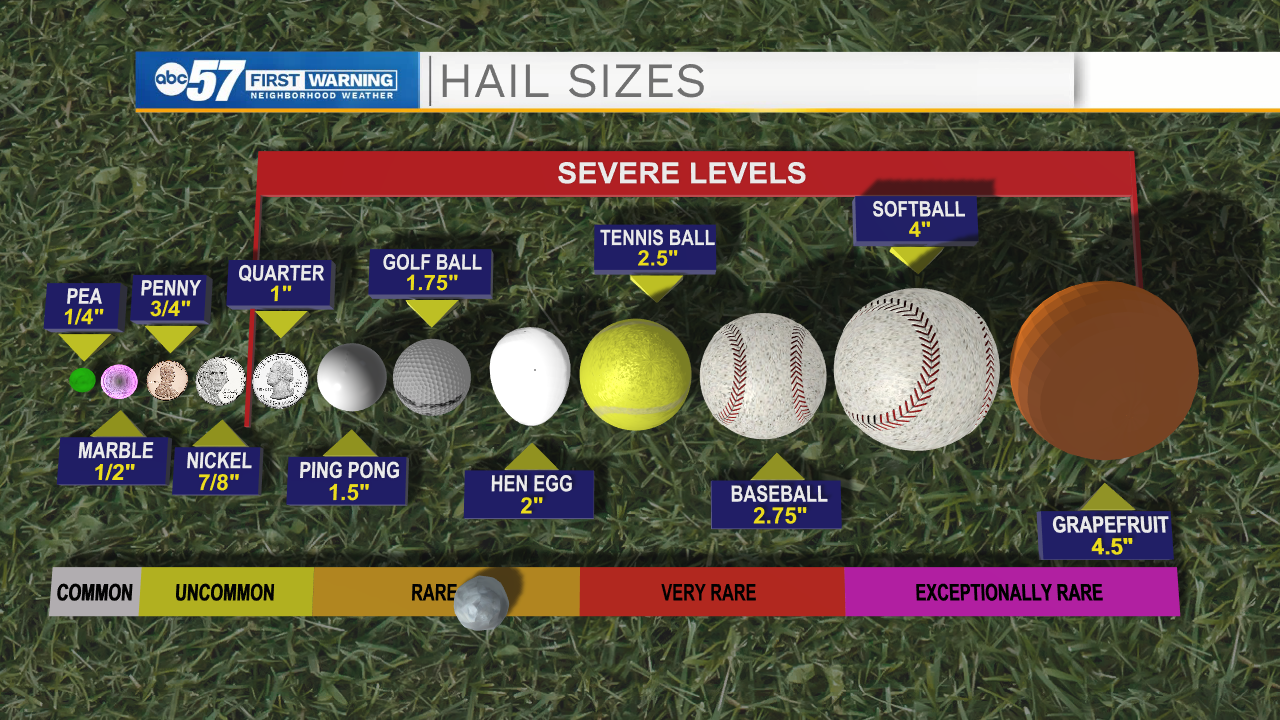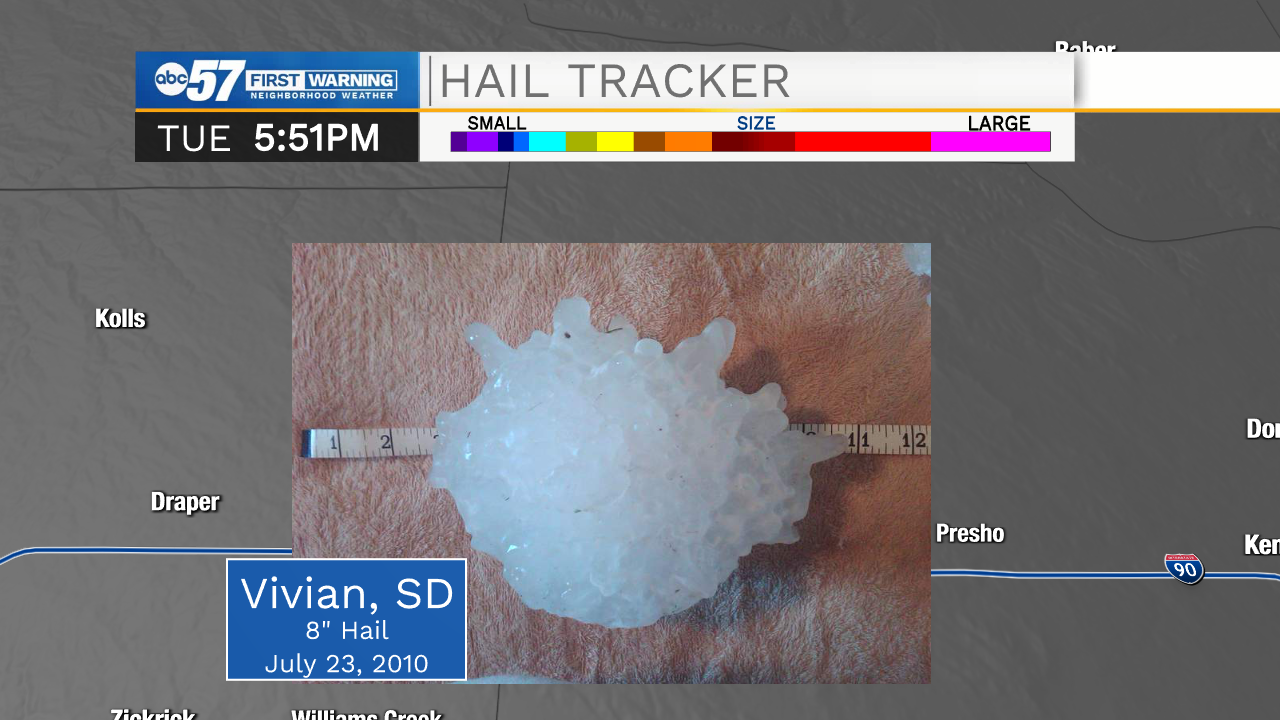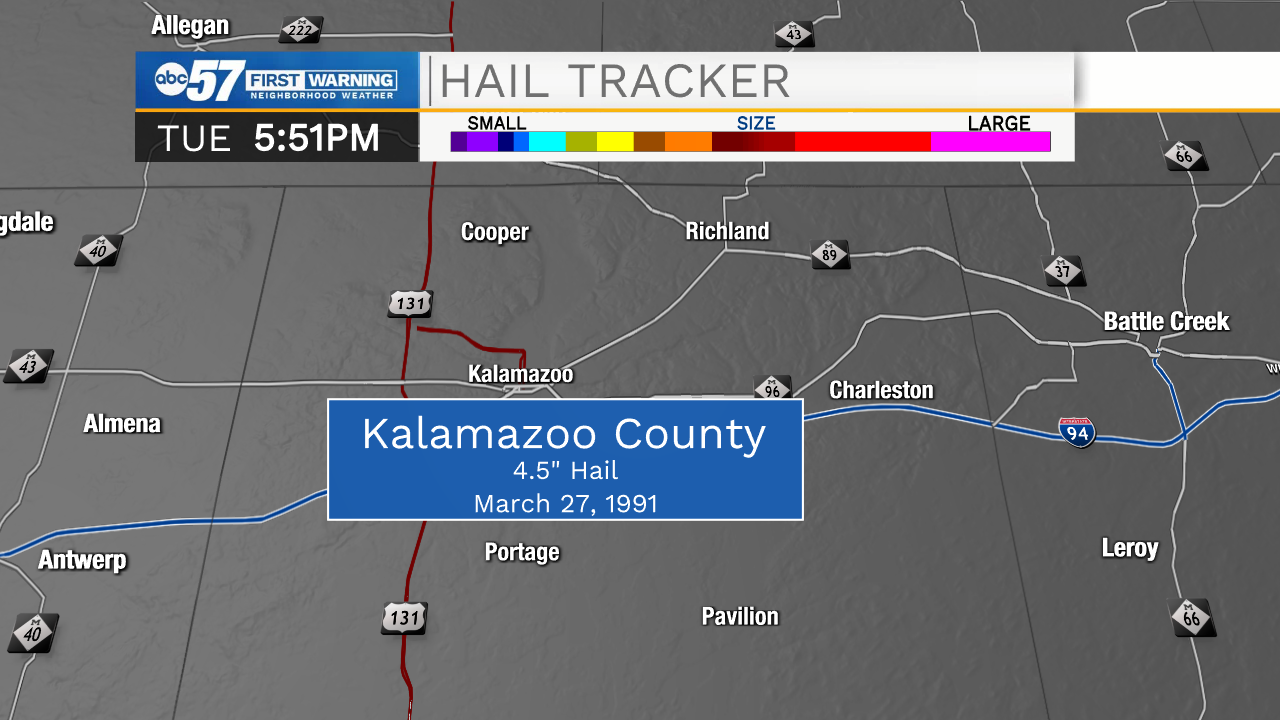More huge hail hits Texas in a spring full of massive hailstones
While severe weather season across Michiana remains very quiet, it was another day of heavy rain and large hail for portions of the southern United States on Monday.
An enormous hailstone reportedly fell from powerful supercell thunderstorms in Mexico.
Another insane giant hail pic from supercell storm that stayed west of Maverick County earlier.
— Chris Suchan (@ChrisSuchanWOAI) May 18, 2021
Pic: Cesar Cantu pic.twitter.com/oFwqfS44OF
This gigantic stone comes less than a month after a monster 6.4 inch hailstone was reported west of San Antonio.
The NWS and @disastersafety surveyed a giant hailstone that fell in Hondo, TX on April 28th, measuring 6.4" in diameter! The measurement will be presented to a State Climate Extreme Committee, who will be tasked to verify and determine what, if any, records were broken. pic.twitter.com/MPujiIXJBv
— NWS Austin/San Antonio (@NWSSanAntonio) May 7, 2021
So, how does hail (of any size) form? Frozen water droplets are swept up and suspended in the air by strong currents of upward-moving air, or updrafts. The hailstone grows in size as additional layers of ice form each time it's swept up above the freezing level. When the stone gets too heavy to be supported by the updraft, it falls to the ground.
An updraft has to be extraordinarily strong to support a hailstone that grows over 6 inches! Remember, anything over 1" in diameter is considered "severe hail."
The largest hailstone in modern history (since 1950) was recorded in Vivian, South Dakota in 2010. That stone measured 8 inches and weighed almost 2 pounds!
The state record in both Indiana and Michigan is 4.5 inches (grapefruit-sized hail). A few events have tied this mark in both states, but one grapefruit sized hailstone was reported as close to Michiana as Kalamazoo County back in 1991.
Hail over 2" in diameter is very rare in Michiana, but we get our fair share of small hail each year. Climatologically, our most common month for hail is May, with the most likely time from 3-6 p.m.
We'll keep hoping the severe weather, including large hail, steers clear of Michiana for a little while longer.


















